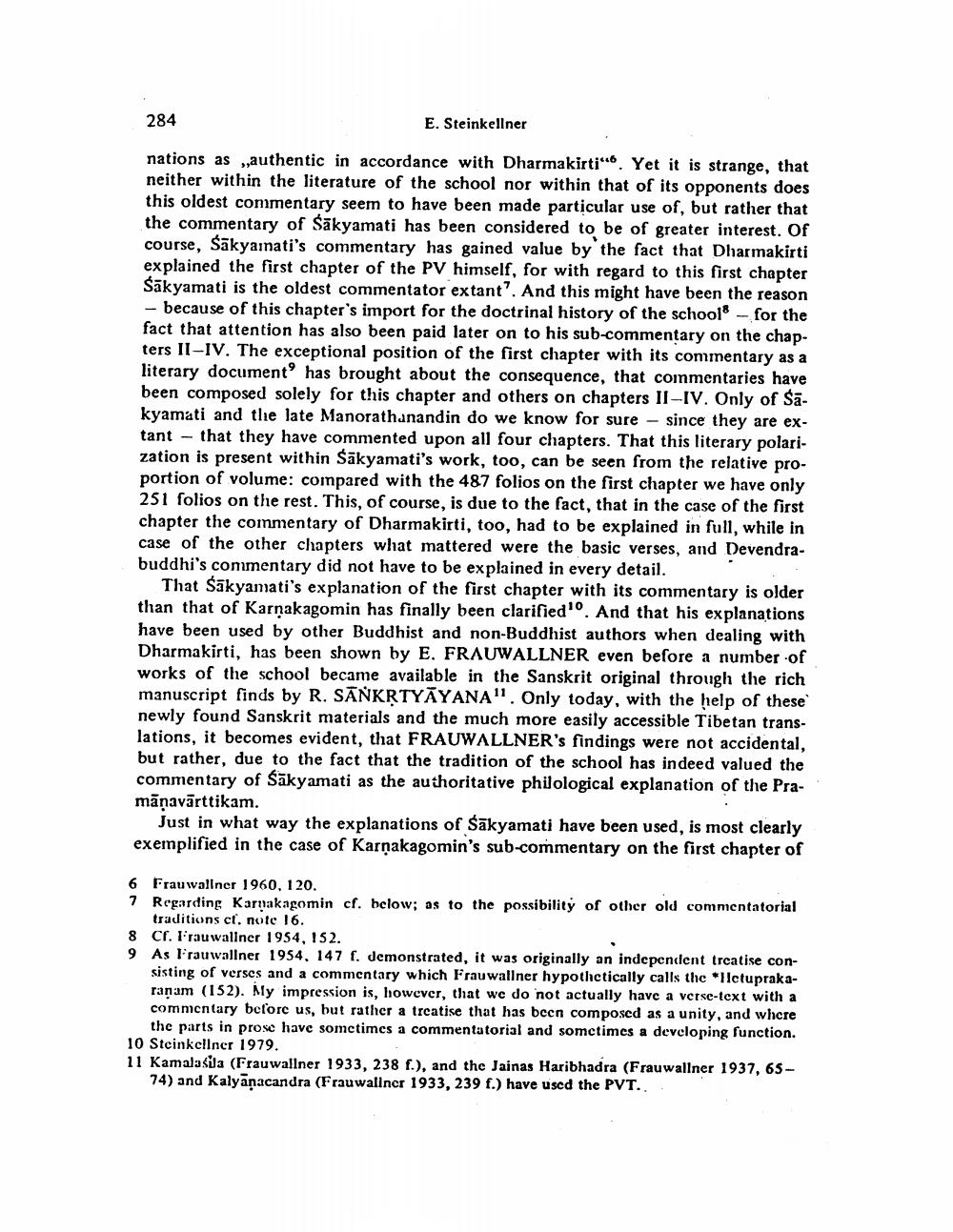Book Title: Philological Remarks On Sakyamatis Pramanavarttikatika Author(s): Ernst Steinkellner Publisher: Ernst Steinkellner View full book textPage 2
________________ 284 E. Steinkellner nations as „authentic in accordance with Dharmakirti. Yet it is strange, that neither within the literature of the school nor within that of its opponents does this oldest commentary seem to have been made particular use of, but rather that the commentary of Sākyamati has been considered to be of greater interest. Of course, Sākyainati's commentary has gained value by the fact that Dharmakirti explained the first chapter of the PV himself, for with regard to this first chapter Sākyamati is the oldest commentator extant. And this might have been the reason - because of this chapter's import for the doctrinal history of the school for the fact that attention has also been paid later on to his sub-commentary on the chapters II-IV. The exceptional position of the first chapter with its commentary as a literary document has brought about the consequence, that commentaries have been composed solely for this chapter and others on chapters II-IV. Only of Sakyamati and the late Manorathanandin do we know for sure – since they are extant - that they have commented upon all four chapters. That this literary polarization is present within Säkyamati's work, too, can be seen from the relative proportion of volume: compared with the 487 folios on the first chapter we have only 251 folios on the rest. This, of course, is due to the fact, that in the case of the first chapter the commentary of Dharmakirti, too, had to be explained in full, while in case of the other chapters what mattered were the basic verses, and Devendrabuddhi's commentary did not have to be explained in every detail. That Sakyamati's explanation of the first chapter with its commentary is older than that of Karnakagomin has finally been clarified". And that his explanations have been used by other Buddhist and non-Buddhist authors when dealing with Dharmakirti, has been shown by E. FRAUWALLNER even before a number of works of the school became available in the Sanskrit original through the rich manuscript finds by R. SANKRTYAYANA". Only today, with the help of these newly found Sanskrit materials and the much more easily accessible Tibetan translations, it becomes evident, that FRAUWALLNER's findings were not accidental, but rather, due to the fact that the tradition of the school has indeed valued the commentary of Sākyamati as the authoritative philological explanation of the Pramāņavārttikam. Just in what way the explanations of Śākyamati have been used, is most clearly exemplified in the case of Karņakagomin's sub-commentary on the first chapter of 6 Frau wallner 1960, 120. 7 Regarding Karnakagomin cf. below; as to the possibility of other old commentatorial traditions cf. note 16. 8 Cr. Irauwallner 1954, 152. 9 As Frauwallner 1954, 147 f. demonstrated, it was originally an independent treatise con sisting of verses and a commentary which Frau wallner hypothctically calls the letuprakaranam (152). My impression is, however, that we do not actually have a verse-text with a commentary before us, but rather a treatise that has been composed as a unity, and where the parts in prose have sometimes a commentatorial and sometimes a developing function. 10 Steinkellner 1979. 11 Kamalasia (Frauwallner 1933, 238 f.), and the Jainas Haribhadra (Frauwallner 1937, 65 74) and Kalyanacandra (Frauwaliner 1933, 239 f.) have used the PVT.Page Navigation
1 2 3 4 5 6 7 8 9 10 11 12 13
